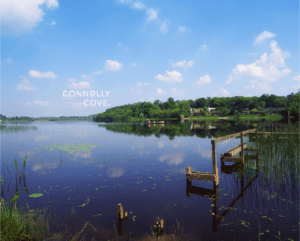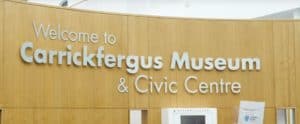Irish Instruments: Exploring the Craftsmanship Behind Uilleann Pipes and Bodhráns

Updated On: April 04, 2024 by Raghda Elsabbagh
Ireland’s rich tapestry of culture is unveiled through its traditional music, and at the heart of this musical heritage are instruments like the uilleann pipes and bodhráns. These instruments resonate with the soul of Irish music, offering distinctive sounds that have echoed through the ages. The uilleann pipes, with their complex design and haunting melodies, serve as Ireland’s national bagpipes, a source of pride and cultural identity. Their intricate manufacturing process reflects a deep respect for craftsmanship, involving skilled artisans who meticulously shape and assemble each component.

Simultaneously, the bodhrán, a traditional Irish frame drum, complements the melody of the pipes with its distinctive rhythm. Relying on the nuanced playing techniques of its musician, the bodhrán is more than just an instrument; it’s a canvas that paints Ireland’s rhythmic identity. It’s not uncommon to find its hypnotic beats providing the backbone to an array of Irish music, from lively jigs to the plaintive airs that tell the stories of a storied past.
Table of Contents
The Essence of Irish Traditional Music
In the tapestry of global music traditions, Irish traditional music stands out for its deep roots in the cultural heritage of the nation and its ability to convey a sense of communal story and emotion.
Irish Music Heritage
Irish traditional music, a UNESCO-recognised expression of the culture heritage of Humanity, embodies the collective memory and identity of Ireland. These melodies and rhythms have been passed down through generations, each tune a vessel for stories and history stretching back centuries. The music’s dynamic nature allows it to thrive both in purity and in fusion with other genres, resonating with listeners across the world.
The Role of Traditional Instruments
Central to this rich musical culture are instruments like the Uilleann pipes and the Bodhrán. The Uilleann pipes, with their distinctive, sweet tone, capable of expressing the subtlest of emotions, have earned their place as a symbol of Irish music. Meanwhile, the Bodhrán, an Irish frame drum, provides an irresistible heartbeat, grounding the music and giving it the drive and energy for which it’s celebrated. Our skilled musicians demonstrate expertise in commanding the unique sounds these instruments produce, ensuring the authentic essence of our music continues to captivate and enchant audiences globally.
Historical Development of Uilleann Pipes

The evolution of the Uilleann Pipes stands as a profound reflection of Irish cultural ingenuity, tracing its path from ancient battlefields to contemporary concert halls. This journey encapsulates centuries of adaptation and finesse driven by a passionate commitment to musical expression.
From Warpipe to Uilleann Pipes
The ancestral forebear of the Uilleann Pipes is considered to be the Irish Warpipe, a powerful instrument employed in war as a means to inspire troops. By the 18th century, a transformation began as these pipes, which were originally mouth-blown, shifted towards a bellows-operated mechanism – giving rise to what we now recognise as the Uilleann Pipes. This significant change not only facilitated a different style of play but also a more intricate repertoire suited for indoor performance.
18th Century Innovations
During the 18th century, the design of the Uilleann Pipes saw remarkable innovations. The addition of the first regulator in the latter half of the century, which allowed players to accompany themselves with chords and harmonies, marked a pivotal point in the instrument’s development. The term ‘Uilleann’, derived from the Irish word for ‘elbow’, references the use of the elbow to pump the bellows. This period also witnessed the crafting prowess of prominent Irish instrument-makers, whose work set a standard for the modern Uilleann Pipes.
UNESCO Recognition
The Uilleann Pipes were designated by UNESCO as an Intangible Cultural Heritage of Humanity, underscoring their significance in the repository of world culture. This honour recognises the Uilleann Pipes as more than an instrument – they are emblematic of a living tradition that represents the resilience and artistry of Irish culture through centuries, illustrating a profound chapter in our collective musical heritage.
Anatomy of Uilleann Pipes

Before delving into the individual elements that make up the Uilleann Pipes, it is essential to understand that these instruments are a point of pride in Irish traditional music, renowned for their complexity and melodious output. Skilfully crafting each component contributes to the distinctive sound that the Uilleann Pipes are known for.
Bag and Bellows
The bag acts as the reservoir for the air that powers the pipes. Made of airtight material, it’s squeezed under the player’s arm to control the flow of air. In contrast to other types of bagpipes, Uilleann Pipes are powered by the bellows. This hand-operated device allows the piper to pump air into the bag without using their breath, resulting in a consistent air supply that produces a steady tone.
Chanter Dynamics
At the heart of the Uilleann Pipes is the chanter. This is the melody pipe with finger-holes, played similarly to a recorder. The chanter can produce a range of notes, including over two full octaves, allowing for expressive performances. Its complex reed and intricate fingering techniques allow the chanter to articulate the soul-stirring melodies intrinsic to Irish music.
The Harmony of Drones and Regulators
Complementing the chanter are the drones and regulators. The drones consist of three pipes of varying lengths, typically tuned to the tonic, fifth, and octave of the key, enriching the sound with a harmonic background. Meanwhile, the regulators are equipped with keys and can be pressed against the bag to provide chordal accompaniment. Mastery of these enables the piper to add layers and depth to the music, making the performance of Uilleann Pipes an immersive experience.
Manufacturing of Uilleann Pipes
In our exploration of the Uilleann Pipes, we uncover a process deeply rooted in tradition and precise craftsmanship that continues to evolve with modern innovation.
Craftsmanship and Materials
The crafting of Uilleann Pipes begins with selecting quality materials, with African Blackwood being the most favoured due to its density and tonal qualities. This durable hardwood is often chosen for its ability to produce a rich, resonant sound that’s become synonymous with the pipes. Other woods, like ebony, are sometimes used, but African Blackwood’s stability under the stress of play makes it a standout choice. Metal fittings are typically crafted from brass or silver, adding aesthetic appeal and functional durability.
Pipemakers’ Techniques
Pipemakers utilise a blend of time-honoured techniques and contemporary tools to shape and assemble the instrument’s complex components. The process requires meticulous attention to detail, as the creation of each part demands a high level of precision. The artistry of Uilleann Pipemakers often goes unnoticed; however, it’s their skill that ensures each set of pipes produces the perfect pitch and timbre. Their techniques often involve turning on a lathe, careful hand-finishing, and testing to achieve a seamless assembly. Innovative tools and methods are embraced where they can improve the quality and efficiency of pipe manufacturing, showcasing the dynamic nature of this time-honoured craft.
Playing Techniques of Uilleann Pipes

The playing techniques of Uilleann Pipes demand a combination of precise posture and hand placement, mastery over the bellows, and the inclusion of articulate ornamentation to give the music its distinctive Irish character.
Posture and Hand Placement
Our posture is crucial when playing the Uilleann Pipes; it must be relaxed yet structured, ensuring ease of movement for optimal playing. The hand placement is also of vital importance, as fingering is intricate and pivotal to producing the desired melody. Proper hand placement entails resting the chanter on the thigh, fingers poised to cover the holes accurately to produce clear notes.
Mastering Bellows Control
Bellows control is the heart of fluid play, requiring our coordination to maintain continuous air flow and regulate the pressure to the pipes. The technique involves using the elbow to pump the bellows skillfully, which in turn fills the bag — the reservoir that feeds air into the pipes — allowing us to create an even and sustained tone throughout the melody.
Articulation and Ornamentation
Ornamentation enriches the melody, and our articulation of grace notes, rolls, and cuts must be precise. These embellishments add texture and complexity to the music. In understanding music theory, we learn to interweave these ornaments naturally into the tunes we play, elevating the Uilleann Pipes’ distinct sound. A tutorial can guide us through the nuances of these techniques, reinforcing our practical knowledge.
Prominent Uilleann Pipers and Influences
As we explore the intricate craft of Irish musical instruments, we recognise the individuals who have shaped the tradition of uilleann piping. Through their mastery and innovation, they have left an indelible mark on Irish music.
Historical Figures
Willie Clancy, a name synonymous with uilleann piping, was a seminal figure whose style and teaching have greatly influenced players worldwide. His legacy, preserved through recordings and the annual Willie Clancy Summer School, continues to inspire both new learners and professional pipers.
Séamus Ennis, undoubtedly a legend, was monumental in the proliferation of Irish traditional music. With a distinctive playing style and dedication to collecting and preserving tunes, he has greatly contributed to what we know today as the repertoire of traditional Irish music.
Modern Exponents
Moving to more recent times, Paddy Keenan has been likened to the Jimi Hendrix of the uilleann pipes. Keenan’s rapid ornamentation and powerful playing have made him a standout artist, influencing pipers to push the boundaries of the instrument.
Meanwhile, organisations like Na Píobairí Uilleann stand at the forefront of nurturing and safeguarding the art of uilleann piping. They provide resources, classes, and events that cultivate a vibrant community of pipers, from novices to seasoned performers.
We appreciate the role of these pipers and the influences who have elevated the art of uilleann piping to astonishing heights. Their contributions ensure that this distinctive sound remains integral to the tapestry of Irish music.
The Bodhrán: Rhythm and Identity

The bodhrán exemplifies the vibrant rhythm of Irish music, its unmistakable beat a cornerstone in reels and jigs. This traditional drum is not merely an instrument; it’s a symbol of Irish cultural identity.
Construction and Handling
The bodhrán is crafted with a wooden frame and a goat skin stretched securely across it. Its simple yet nuanced construction allows for a wide range of sounds controlled by the tension of the skin and the player’s technique. Handling this instrument involves the delicate balance of wrist movement and pressure from the hand resting on the inside skin, enabling subtle shifts in tone and resonance.
Frame: Typically made from hardwood for durability.
Skin: Traditionally, goat skin is favoured for its rich, warm sound.
Beater: Also known as a cipín or tipper, used to strike the skin.
Bodhrán in Ensemble Play
Within an ensemble, the bodhrán underpins the melodic swirl of Uilleann pipes, fiddles, and flutes with its deep, grounding rhythms. Whether driving the tempo of a lively reel or providing the subtle heartbeat of a slow air, the bodhrán’s presence is pivotal. To ensure the ensemble’s cohesiveness, the player must have a keen sense of timing and an intimate understanding of the music’s ebb and flow.
Reels: The bodhrán sets a rapid, steady pace for these exuberant dance tunes.
Jigs: It offers a distinctive, triplet-based rhythm that propels these spirited pieces.
Learning and Preservation
Educational initiatives and dedicated institutions play pivotal roles in preserving the rich tradition of Irish music. These not only facilitate learning for aspiring musicians but also ensure the continued vitality of Irish musical craftsmanship, including the artistry of the Uilleann Pipes and the rhythms of the Bodhrán.
Educational Programmes
Master-to-student instruction remains a time-honoured method for transmitting the intricate skills required for playing Irish instruments. Localised workshops such as those run by the Armagh Pipers Club provide hands-on experience and foster community amongst learners. For enthusiasts of the Uilleann Pipes, attending programmes like those offered by the Uilleann Pipe Academy can be a transformative experience. Here, the academy’s structured curriculum guides pipers from basic techniques to advanced performance.
Moreover, events like the Willie Clancy Summer School have become cornerstones in the cultural calendar. At this school, seasoned musicians impart knowledge across various instruments, immersing students in a week-long celebration of music and culture that often ignites a lifelong passion for Irish traditional music.
Cultural and Academic Institutions
Our focus turns to the organisations that serve as custodians of music and cultural heritage. Institutions such as the Willie Clancy Summer School not only offer educational programmes but also archive performances and oral histories, contributing to the academic study of Irish music.
Embodying a dedication to cultural preservation, the Armagh Pipers Club has cemented its place at the heart of Northern Irish music tradition. It stands not just as an educational entity but as an essential venue where the community can appreciate the continued evolution of Irish music.
These educational programmes and cultural institutions collectively ensure that the art of Irish music-making is not only cherished today but also handed down to inspire generations to come.
Complementary Irish Instruments

In the realm of traditional Irish music, certain instruments naturally pair with and complement the distinct sounds of the uilleann pipes and bodhráns. They add layers of melody and harmony to the intricate tapestry of the music.
Tin Whistle and Concertina
The tin whistle, a simple yet expressive instrument, is a staple in Irish folk assemblies. Its high-pitched, clear tone cuts through the mix of other instruments, carrying the main melody or offering decorative flourishes.
On the other hand, the concertina contributes a unique sound that is both percussive and melodic. This hexagonal, bellows-driven instrument is crucial in adding depth to the rhythm and harmony of a piece, making it an indispensable member of the ensemble.
The Fiddle and Beyond
Within the family of Irish stringed instruments, the fiddle holds a prestigious position. It mirrors the human voice with its potential for emotional expression, from lively jigs to soulful airs. The fiddle’s rich, sonorous tones and dynamic range bring a heartfelt dimension to any traditional Irish gathering.
Beyond the fiddle, a host of other instruments gracefully intermingle with the uilleann pipes and bodhráns. Each brings its own unique character to the musical conversation, creating the beautifully woven soundscape that is traditional Irish music.
Evolution of Irish Music Groups

Irish music groups have undergone a transformative journey, encapsulating the heart of Irish cultural traditions in their evolving sounds. In the mid-20th century, traditional music was rejuvenated, leading to the formation of iconic bands that would shape the landscape of Irish folk music.
The Bothy Band, formed in 1975, brought a fresh dynamism to Irish traditional music. Their interpretations of old tunes infused with modern sensibilities made them standout in the folk scene. Following their lead, Planxty, also emerging in the early 70s, was pivotal in reintroducing traditional Irish melodies to a new generation, weaving contemporary elements with time-honoured sounds.
- Bothy Band
- Formed: 1975
- Contributions: Modern edge to traditional tunes
- Planxty
- Era: Early 1970s
- Impact: Revitalised old Irish melodies
These groups nurtured an environment that respected the rich tapestry of Irish cultural traditions, reinventing them for audiences far beyond their origins. Their music has been a beacon, guiding those unfamiliar with the genre through a compelling narrative of Ireland’s heritage.
Irish music groups have gracefully made the transition from national treasures to global ambassadors of folklore. They carry the torch that illuminates Ireland’s musical history, ensuring its vibrancy for future enthusiasts. Each band’s unique approach to rhythm and harmony has become a distinguishing feature of Ireland’s cultural expression, charming listeners around the world.
Frequently Asked Questions

In this section, we’ll address some of the most common queries related to the craftsmanship of traditional Irish instruments, particularly the uilleann pipes and bodhráns.
What factors determine the quality of traditional Irish uilleann pipes?
The quality of uilleann pipes is influenced by the materials used, the precision of construction, and the experience of the maker. Top-quality pipes are often made from African Blackwood and feature precise tuning and comfortable playability.
Where can one find authentic bodhráns for purchase in Ireland?
Authentic bodhráns can be found in specialised music shops throughout Ireland. These stores focus on Irish-made instruments and often have connections with local craftspeople in regions renowned for bodhrán making.
What are the distinguishing characteristics of a well-crafted bodhrán?
A well-crafted bodhrán will have a solid frame, usually made from hardwood, a carefully treated skin that provides a responsive and dynamic range of tones, and a reliable tuning mechanism, if applicable.
How does one go about selecting a reputable bodhrán maker?
Selecting a reputable bodhrán maker involves research and seeking recommendations from seasoned players, and it often includes reading reviews or visiting workshops to see the instruments first-hand.
Can you explain the cultural significance of the bodhrán in Irish music?
The bodhrán holds a central place in Irish music as both a rhythmical backbone in sessions and an emblem of Irish cultural identity, rising in prominence since the traditional music revival of the 20th century.
What are the challenges faced by beginners learning to play the uilleann pipes?
Beginners on the uilleann pipes often struggle with the instrument’s complexity, including mastering the bellows technique, the chanter’s intricate fingerings, and the coordination required to produce a consistent, melodious sound.






